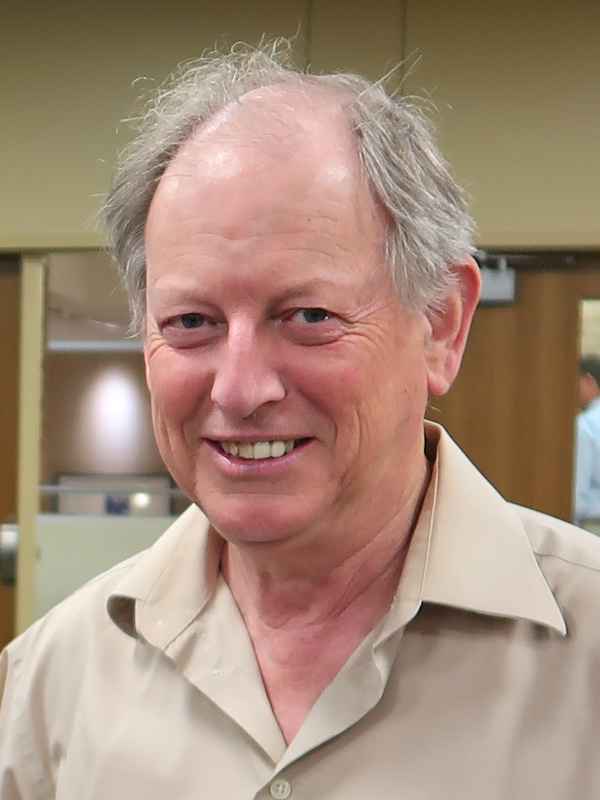Biography
Courses
OCNG 251 Oceanography
OCNG 640 Chemical Oceanography
OCNG 661 Advanced Oceanographic data analysis and communication
Research Interests
Interests:
- Marine chemistry- nutrient cycling in coastal areas, and their use as tracers as a means of identifying large-scale oceanic circulation patterns; the marine iodine cycle.
- The physics and chemistry of upwelling areas.
- Low oxygen regimes in the ocean.
- Marine chemistry of the Gulf of Mexico
- Marine pollution- oil production control methods, particularly dispersant usage.
-
Chemical Oceanography; Hypoxia, Ocean Tracers, Oil Pollution
Recent Projects:
- Effects of Hurricane Harvey on coastal waters off Texas
I and other researchers were granted a NSF RAPID award to study the effects of Hurricane Harvey (2017)
on Texas coastal waters. We had data from prior to the storm, an this project allowed us to complete two
cruises after the hurricane to look at the effects on coastal water structure and composition - Mechanisms controlling hypoxia: integrated causal modeling
I am one of a group of PIs at TAMU and elsewhere (VIMS, LSU, LUMCON, Dalhousie, Carolina Coastal U) that has been working to elucidate the controls of the annual “dead zone” off the coast of Louisiana and Texas and create a model that will allow us to forecast its occurrence. This has involved a number of cruises to study the water structure, water chemistry, and interactions with the sediments, as well as a major modeling effort.
- Gulf Integrated Spill Research (GISR)
I was the Lead PI and Program Director for a consortium that studied the physics and chemistry of sub-sea oil spills following the BP Macondo rig blowout in 2010. The consortium included PIs from TAMU, Berkeley, Cardiff, Georgia Tech, N. Carolina State U, Stanford, U. Hawaii, U. Maryland, U. Rochester, U. Texas, and Woods Hole. Work included hydrography, moorings and tracer releases, together with laboratory experiments on droplet size and movement and a large modeling component.
Educational Background
- Ph.D. Chemical oceanography, University College of North Wales, Bangor, 1982
- B.S. Chemistry, University College of North Wales, Bangor, 1971
Industry Experience
-
- Professor and Head of Department at Texas A&M, October 2007-2013
- Executive Director, CREST Program, Louisiana State University and Adjunct Professor in the Departments of Oceanography and Coastal Studies and Environmental Studies, September 2002-September 2007
- Director, U.S. WOCE Office at Texas A&M, January 1990-September 2002
- Specialist Scientist, Sea Fisheries Research Institute, Cape Town, South Africa, August 1977-December 1989
- Chemist, Yorkshire Water Authority, U.K., October 1976-July 1977
- Senior Research Associate, School of Environmental Sciences, University of East Anglia, U.K., October 1974-September 1976.
Awards & Honors
- Fellow, Royal Society of Chemistry, U.K. (Chartered Chemist)
- Sigma Xi
- Honorary Visiting Scholar, School of the Environment, Flinders University, Adelaide, 2014, 2016
- Visiting Scientist, South Australian Research and Development Institute, Adelaide, 2016
- TAMU Newsmaker of the Year, 2010
- Chapman Basin (27° 51’N, 92° 08’W) named after me
Selected Publications
Books
- Kämpf, J. and P. Chapman (2016) Upwelling Systems of the World, Springer.
- Sparrow, M., P. Chapman and J. Gould (eds). Hydrographic Atlas of the World Ocean Circulation Experiment, Vols 1 Southern Ocean (2005); 2 Pacific Ocean (2008); 3 Atlantic ocean (2013); 4 Indian Ocean (2014)
Recent Papers
- Chapman, P., T.L. Wade and A. Knap (2018). Environmental Effects and Management of Oil Spills on Marine Ecosystems. In: Environmental Management of Marine Ecosystems (N. Islam, S.E. Jorgensen, J.C. Stevenson and D. Kitazawa, eds), Tayor and Francis/CRC Press
- Chapman, P., F. DiMarco, R.M. Key, C. Previti ansd S. Yvon-Lewis (2017). Age constraints on Gulf of Mexico deep water ventilation as determined by 14C measurements. Radiocarbon, 2017, 1-16, doi:10.1017/RDC.2017.80.
- Ledwell, J.R., R. He, Z. Xue, S.F. DiMarco, L. Spencer and P. Chapman (2016). Dispersion of a tracer in the deep northern Gulf of Mexico. Journal of Geophysics Research (in press) DOI: 1002/2015JC011405
- Chapman, S. Socolofsky and R. Hetland (2014). From blowout to beach: an integrated modeling approach. Proceedings of the 2014 International Oil Spill Conference, 919-932.
- C., Quigg, A., DiMarco, S., Chapman, P. and G. Rowe (2014). Benthic-Pelagic Coupling in the Gulf of Mexico Hypoxic Area: Sedimentary enhancement of hypoxic conditions and near bottom primary production. Continental Shelf Research, http://dx.doi.org/10.1016/j.csr.2014.06.006.
- Li, X, Bianchi, T.S., Allison, M.A., Chapman, P. and G.P. Yang (2013). Historical reconstruction of organic carbon decay and preservation in sediments of the East China Sea shelf. Journal of Geophysics Research: Biogeosciences 118, 1-15, doi:10.1002/jgrg.20079
- Li, X.X., Bianchi, T.S., Allison, M.A. , Chapman, P., Mitra, S., Zhang, Z., Yang, G.P. and Z.G. Yu. (2012). Composition, abundance and age of total organic carbon in surface sediments from the inner-shelf off the East China Sea. Marine Chemistry, 145-147, 37-52
- Johnson, J. and P. Chapman (2011). Deep Ocean Exchange with the Shelf (DOES). Ocean Science 7, 101-109.
- Chapman, P. and V.W. Truesdale (2011). Preliminary evidence for iodate reduction in bottom waters of the Gulf of Mexico during an hypoxic event. Aquatic Geochemistry, 17, 671-695; doi:10.1007/s10498-011-9123-6.
- Bianchi, T.S., DiMarco, S.F., Cowan, J.H., Hetland, R.D., Chapman, P., Day, J.W. and M.A. Allison (2010). The Science of Hypoxia in the Northern Gulf of Mexico: A Review. Science of the Total Environment, 408, 1471-1484; doi: 1016/j.scitotenv.2009.11.047.
- Rabalais, N.N., R. E. Turner, B. K. Sen Gupta, D. F. Boesch, Chapman and M. C. Murrell (2007). Hypoxia in the northern Gulf of Mexico: Does the science support the plan to reduce, mitigate and control hypoxia? Estuaries and Coasts, 30, 753-772.
- Chapman, P. and Reed, D.J. (2006). Advances in coastal habitat restoration in the northern Gulf of Mexico. Ecological Engineering 26 (1), 1-5; doi: 10.1016/j.ecoleng.2005.09.003.

